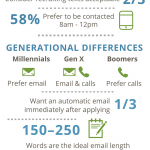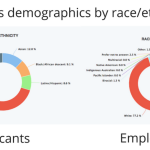Why Your Competition’s Staff Will Be Your Best Employees
If you’re in an industry where competition for customers is fierce or it’s hard to find the best talent, you might want to pay attention to the Stanley Cup playoffs. Scouting your competition for new “players” can help you gain an edge, according to the new study “Coming Back to Edmonton: Competing with Former Employers and Colleagues,” published in the Academy of Management Journal.
Researchers found that people who are hired to work at a firm that competes with their current employer come to the job with an increased energy that often translates into higher sales or productivity.
“Competition is perfect to see what potential employees can do,” says Thorsten Grohsjean, co-author of the study and assistant professor of strategy/organization at Ludwig Maximilian University in Munich, Germany. “However, what was even more important to us in our study was the role of competition in helping the employee to move companies.”
Why Hockey?
Measuring individual competitive intensity can difficult, so Grohsjean and his colleagues looked outside the corporate sector to a realm were aggressiveness is well documented: the National Hockey League. It was ideal for three reasons:
- Ice hockey players regularly change teams.
- The NHL tracks players’ complete employment histories, including information about former teams and teammates.
- The NHL’s documentation provides detailed information, which provided information about players’ time on ice and their competitive behavior down to the second.
What They Discovered
Researchers studied players who were active during the 2011-12 season and who had been affiliated with more than one NHL team during their careers. To measure competitive intensity, they looked at checking, the defensive technique where players ram into opponents who have the puck in the hopes that it comes loose.
“In contrast to other measures, like goals, checks can be traced back to an individual’s effort, rather than being the result of an overall team effort,” says Grohsjean.
Skaters who had been former teammates were checked 10.8% more often. It was also found that the amount of checking against former teams and teammates tended to be highest in the year directly following departure before steadily receding in subsequent years, and checking levels tended to be higher the more years a player spent with a former club or teammate.
But there was an exception: Skaters were likely to be less competitive when paired against friends or colleagues they left behind, saving their “competitive juices” for others in their former company. According to the study, “simultaneously identifying with former colleagues and the new organization does not result in an identity conflict [if the newcomers] direct their competitive behavior toward non-former colleagues in the competing organization.”
Why It Happens
Transplanted players need to prove their value to their new teams in a process the researchers call “de-identification.”
“If new employees compete against their old company, they will identify with the new organization and de-identify from the former one,” says Grohsjean. “Moving across organizations can be a psychological challenge, especially if employees still identify with their former company. Situations of competition can help to reduce this conflict.”
And interestingly the circumstances of players’ departure, such as being traded, did not impact the results. The researchers found instead that the competitive level was more about career and identity pressures than anger or desire for vengeance.
What It Means For You
While your office (hopefully) doesn’t encourage checking, the behavior dynamics have application in the workplace, the study suggests. “When firms hire employees from competitors, they not only gain human and social capital but can also expect the new employees to work particularly hard when competing against their former employers,” says Grohsjean. “The most obvious thing would be that they let the new employees compete against the old firm but not against old colleagues. A potential way to mitigate this problem is to hire an entire team instead of an individual.”
In positions such as sales, it also might be strategic to put new employees who came from a rival company on accounts or projects that allow them to directly compete with their former employer, since they will show more competitive behavior.
“One could infer from our study that firms should pay more attention to the psychological consequences of moving firms,” says Grohsjean. “It takes some time and energy for new hires to let the old organization go before they feel they belong to the new organization.”
Fast Company , Read Full Story
(13)













